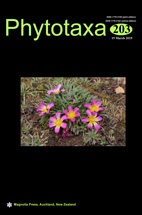Abstract
The aim of this study was to quantify and compare morphological variation between 14 populations of J. heuffelii distributed in Serbia, Romania, Bulgaria and Macedonia and to correlate their morphological characteristics with the geomorphologic and bioclimatic parameters of their habitats. For these purposes, several multivariate analyses (PCA, CDA, clustering UPGMA analysis based on Mahalanobis distances, MCA, and Spearman’s correlation) of the vegetative and generative plant organs were performed. Analyses showed that apart from the overall morphological variability, which is related to environmental conditions, there are four groups of populations that are morphologically distinct. Although the results clearly indicate the significant influence of environmental factors (elevation, aspect and slope) on the morphology of the species, we found that recent bioclimatic conditions, geological substratum and geographical position are only of secondary importance in the pattern of morphological variation in J. heuffelii in the area investigated.

